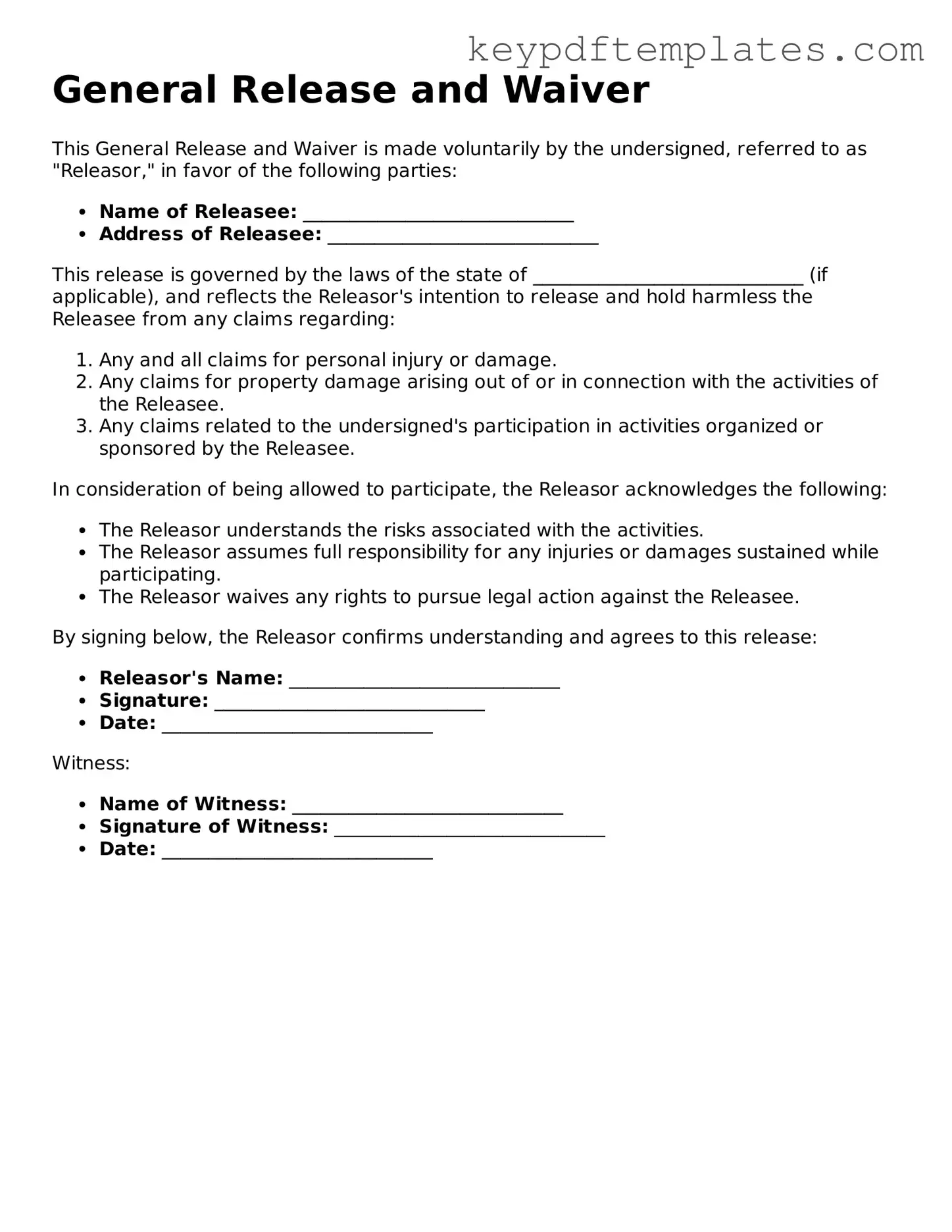Printable Release of Liability Template
A Release of Liability form is a legal document that protects an individual or organization from being held liable for injuries or damages that may occur during an activity. By signing this form, participants acknowledge the risks involved and agree to waive their right to seek compensation for any potential harm. Understanding this form is crucial for both providers and participants in various recreational and professional settings.
Modify Document Online
